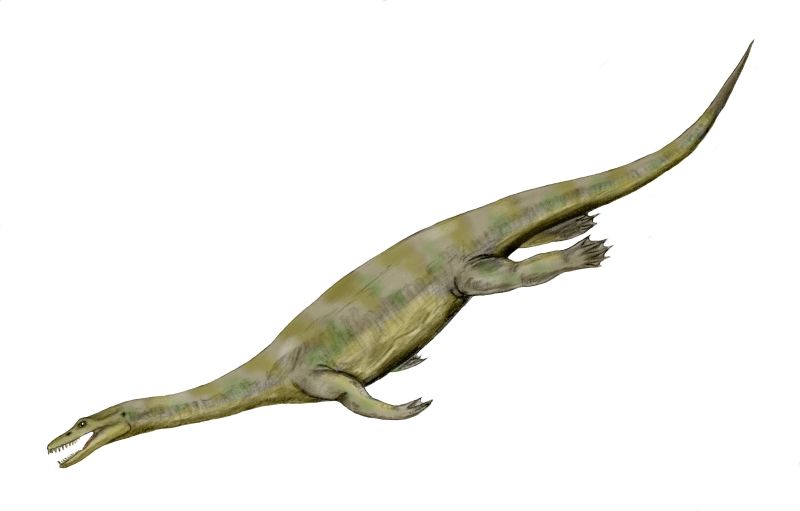 Nothosaurus (meaning "false reptile") is an extinct genus of sauropterygian reptile from the Triassic period, approximately 240-210 million years ago, with fossils being distributed from North Africa and Europe to China. It is the best known member of the nothosaur order.
Nothosaurus (meaning "false reptile") is an extinct genus of sauropterygian reptile from the Triassic period, approximately 240-210 million years ago, with fossils being distributed from North Africa and Europe to China. It is the best known member of the nothosaur order.
A complete skeleton of the species Nothosaurus raabi can be seen in the Natural History Museum in Berlin.
Description[]
Nothosaurus was a semi-oceanic animal which probably had a lifestyle similar to that of today's seals. It was about 4 metres (13 ft), with long, webbed toes and possibly a fin on its tail.[1] When swimming, Nothosaurus would use its tail, legs, and webbed feet to propel and steer it through the water. The skull was broad and flat,with long jaws, lined with needle teeth, it probably caught fish and other marine creatures. Nothosaurus hunted by sneaking up slowly on prey, such as shoals of small fish, then putting on a last-minute burst of speed[citation needed]. Once caught, few animals would be able to shake themselves free from the mouth of Nothosaurus.
In many respects its body structure resembled that of the much later plesiosaurs, but it was not as well adapted to an aquatic environment. It is thought that one branch of the nothosaurs may have evolved into plesiosaurs such as Liopleurodon, a short-necked plesiosaur that grew up to 6.4 metres (21 ft), and the long-necked Cryptoclidus, a fish eater with a neck as long as 9 metres (30 ft).
Species[]
There are over a dozen known species of Nothosaurus. The type species is N. mirabilis, named in 1834 from the Germanic Muschelkalk. Other species include N. giganteus (previously known as Paranothosaurus) from Osnabrück, Germany;[2] N. juvenilis, also from Germany;[3] N. edingerae from the Upper Muschelkalk and Lower Keuper;[4] N. haasi and N. tchernovi from Makhtesh Ramon, Israel;[5][6] N. cymatosauroides from the Spanish Muschelkalk;[7] N. jagisteus from the Upper Muschelkalk of Hohenlohe, Germany;[8] and N. youngi, N. yangjuanensis, and N. rostellatus from Guizhou, China.[9][10][11] Several species have been described from the Lower Muschelkalk in Winterswijk, the Netherlands, including N. marchicus,[12] N. winterswijkensis,[12] and the recently named N. winkelhorsti.
Several other species have been named but are know generally considered invalid. One such species, N. procerus, is now considered a junior subjective synonym of N. marchicus.[14][15] Other species now considered invalid include N. crassus, N. oldenburgi, N. raabi, N. schroderi, and N. venustus.